#Climate Control Optimization
Explore tagged Tumblr posts
Text
How to Use Regular Inspections to Identify Air Duct Replacement Needs
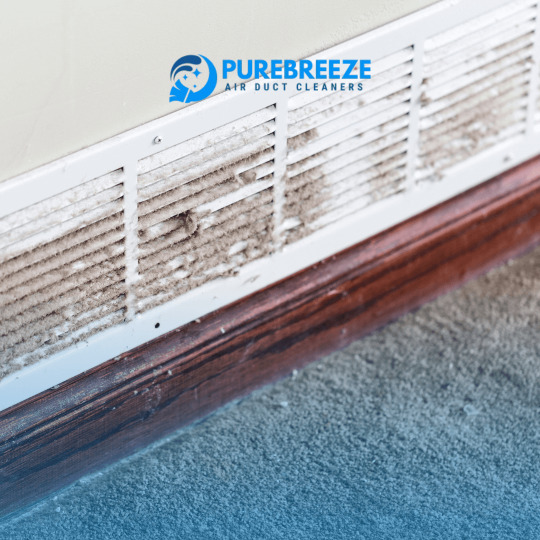
Air ducts play a vital role in maintaining your home’s comfort by circulating air efficiently throughout your space. Over time, air ducts can become damaged, leaky, or clogged with debris, which impacts their performance. Regular inspections are essential to catch these issues early and prevent costly repairs. In some cases, these inspections may reveal the need for air duct replacement to ensure optimal HVAC performance and air quality.
The Importance of Regular Air Duct Inspections
Regular inspections of your air ducts are crucial for identifying potential problems before they escalate. Over time, ducts can develop cracks, loose connections, or even suffer from blockages due to accumulated debris. These issues can lead to inefficient airflow, uneven room temperatures, and increased energy consumption. Early detection through routine inspections helps address these problems, preventing more significant damage that might require an urgent air duct replacement.
Signs Your Air Ducts May Need Replacement
There are several signs that your air ducts may require attention. If you notice uneven heating or cooling, higher-than-usual energy bills, or excessive dust buildup in your home, these could be red flags. Other indicators include strange noises coming from your HVAC system or visible damage to ductwork during an inspection. When these signs appear, a professional assessment can determine whether air duct replacement is necessary.
Extending the Life of Your HVAC System Through Inspections
Regular air duct inspections not only identify when replacement is needed but also help extend the lifespan of your HVAC system. Addressing minor issues early prevents them from escalating into major problems that can overwork your system. This proactive approach can save you money on energy costs and avoid the need for premature HVAC replacements. Routine maintenance, paired with timely air duct replacement, ensures your system operates efficiently for years.
Benefits of Air Duct Replacement
When inspections reveal significant duct damage, replacing the ducts can bring several benefits. A new duct system eliminates leaks, improving airflow and ensuring consistent temperatures throughout your home. This also enhances your HVAC system’s energy efficiency, helping to reduce utility bills. Moreover, air duct replacement improves indoor air quality by preventing contaminants like dust, mold, and allergens from circulating, making your home a healthier place.
How Often Should You Schedule Inspections?
To maintain a well-functioning HVAC system, it’s recommended to schedule air duct inspections every three to five years. However, homes with older systems, frequent HVAC usage, or noticeable performance issues may require more frequent inspections. By identifying problems early, you can plan for necessary maintenance or air duct replacement, avoiding unexpected disruptions and ensuring consistent home comfort.
Stay Ahead with Proactive Air Duct Care
Don’t let hidden air duct issues compromise your home’s comfort and efficiency. Regular inspections are the key to maintaining a healthy HVAC system. If your ducts show signs of wear or damage, consider scheduling a professional evaluation. When replacement is necessary, air duct replacement ensures your system runs smoothly, providing a more comfortable and energy-efficient home environment.
#Air Duct Replacement#Professional Air Duct Replacement#Residential Air Duct Replacement#Commercial Air Duct Replacement#HVAC Duct Replacement#Ductwork Replacement#Energy Efficient Ducts#Airflow Improvement#Damaged Duct Replacement#Leaky Duct Repair#Indoor Air Quality#HVAC Efficiency#Duct Sealing#New Air Duct Installation#HVAC System Maintenance#Air Duct Inspection#Old Duct Removal#Climate Control Optimization#Enhanced Home Comfort#Ventilation System Upgrade#Duct Replacement Services#Air Duct System Repair#HVAC Airflow#Cost-Effective Duct Replacement#Home Energy Savings#Clean Air Circulation.
0 notes
Text
"AC Maintenance Tips for Homes and Businesses in Saudi Arabia’s Harsh Climate"
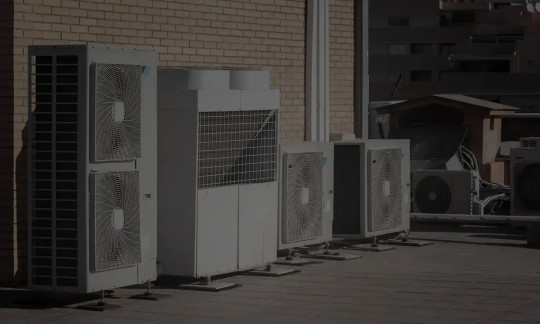
Air conditioning systems are vital for both homes and businesses in Saudi Arabia, where temperatures often soar to extreme levels. Ensuring that your AC unit functions at its best is essential not only for comfort but also for maintaining efficiency and reducing energy costs. Proper maintenance can prevent unexpected breakdowns during the hottest months, while also prolonging the lifespan of your system.
To maintain an efficient and reliable cooling system, many property owners opt for professional AC maintenance services to ensure their air conditioning units stay in top condition. Regular maintenance services can help identify potential issues before they escalate, avoiding costly repairs or the need for a full replacement.
1. Regular Filter Cleaning and Replacement
One of the simplest yet most effective maintenance tasks for any air conditioning system is regular filter cleaning or replacement. In Saudi Arabia’s dusty environment, filters can quickly become clogged with dust and debris, making the system work harder and reducing efficiency. Dirty filters restrict airflow, which not only increases energy usage but also decreases the unit's ability to cool properly. For both homes and businesses, it is recommended to clean or replace filters every one to three months, depending on the frequency of use.
2. Inspect and Clean Condenser Coils
The outdoor unit of your air conditioning system contains condenser coils that are responsible for releasing the heat absorbed from the indoor air. These coils are exposed to the elements, and in a harsh climate like Saudi Arabia, dust, dirt, and debris can easily accumulate. When the coils are dirty, the system's ability to dissipate heat is compromised, leading to reduced cooling performance and higher energy consumption. Regular cleaning of the condenser coils helps ensure optimal performance and efficiency.
3. Check Refrigerant Levels
For your AC system to cool effectively, it needs the correct amount of refrigerant. Low refrigerant levels can lead to inadequate cooling, causing the system to run longer and work harder. Over time, this can increase wear and tear on the unit and even lead to system failure. It’s important to have a professional check refrigerant levels during routine maintenance and top off as necessary to keep your system running smoothly.
4. Inspect Ductwork for Leaks
Leaky ductwork can significantly affect the efficiency of your air conditioning system, as cool air escapes before it reaches its intended destination. For businesses and larger properties, this can result in uneven cooling, higher energy bills, and an overworked AC unit. Regularly inspecting ductwork for leaks or gaps and sealing them as needed will help ensure that your air conditioning system is delivering cooled air efficiently.
5. Schedule Professional Maintenance
In Saudi Arabia’s extreme climate, scheduling professional AC maintenance at least twice a year is highly recommended. Professional technicians have the knowledge and tools to thoroughly inspect your system, clean essential components, and identify potential problems before they escalate. Businesses, in particular, can benefit from having a comprehensive maintenance plan to avoid costly downtime due to AC failure.
Whether you own a small home or manage a large commercial facility, regular AC rental service and maintenance are crucial for ensuring the longevity and efficiency of your cooling systems.
6. Optimize Thermostat Settings
Maintaining an optimal temperature setting on your thermostat can greatly impact energy usage and overall system performance. In Saudi Arabia, where temperatures can reach extreme highs, setting your thermostat just a few degrees higher can significantly reduce the strain on your AC unit. Additionally, programmable thermostats allow you to set different temperatures based on your schedule, which can help save energy when cooling is not needed.
7. Keep the Area Around the Outdoor Unit Clear
The outdoor unit of your air conditioner needs adequate airflow to function properly. Debris such as leaves, dirt, and plants can obstruct the airflow, causing the unit to work harder and reducing its efficiency. Regularly check and clear any debris from around the outdoor unit, and make sure that there is at least two feet of clearance on all sides to promote optimal airflow.
8. Ensure Proper Ventilation
Ventilation plays a crucial role in the effectiveness of your AC system, particularly in business settings where large numbers of people and equipment generate heat. Poor ventilation can increase humidity levels, making it harder for your air conditioner to cool the space. Make sure that vents and return air registers are not blocked by furniture or other obstructions, and consider using ceiling fans to help distribute cool air more evenly throughout the space.
Conclusion
Maintaining your air conditioning system is essential in Saudi Arabia’s harsh climate, where efficient cooling is a necessity rather than a luxury. By following these AC maintenance tips, you can ensure that your system operates efficiently, keeps energy costs under control, and provides reliable cooling when you need it most.
Investing in regular AC maintenance service is key to extending the life of your system and avoiding the discomfort and expense of unexpected breakdowns. Whether for a home or business, proper maintenance is a proactive step toward achieving consistent and cost-effective cooling year-round.
#Commercial chiller maintenance#HVAC maintenance#Chiller efficiency#AC maintenance service#Chiller rental service#Cooling solutions Saudi Arabia#Energy-efficient cooling#Chiller system repair#Chiller optimization#Facility management#Preventive maintenance#Refrigerant monitoring#Compressor maintenance#Saudi Arabia HVAC services#Cooling equipment upkeep#HVAC Maintenance#Chiller Maintenance#Commercial Cooling Solutions#Energy Efficiency#Saudi Arabia Climate Control#Building Management Systems#Facility Management#AC Maintenance Services#Chiller Rental Services#Sustainable Cooling Solutions#Industrial Cooling Systems#Preventive Maintenance Tips
3 notes
·
View notes
Text
Essential Steps to Get Your Home Ready for a New AC System
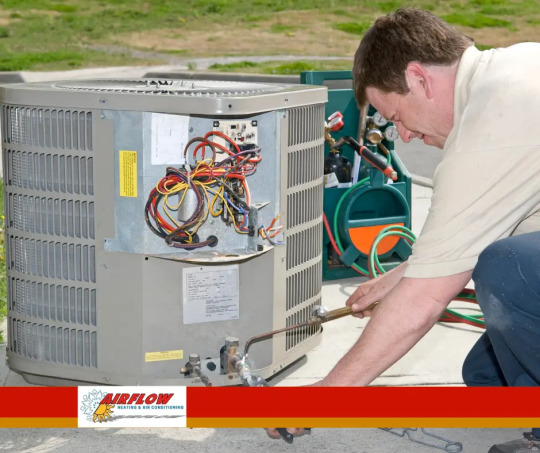
A new air conditioning installation is a significant investment that can improve your home's comfort and energy efficiency. Proper preparation ensures a smooth process and maximizes the performance of your new system. Whether you're replacing an outdated unit or installing an air conditioner for the first time, following essential steps can help you get your home ready for the upgrade.
Assess Your Home’s Cooling Needs
Before scheduling an air conditioning installation, it’s important to evaluate your home’s specific cooling requirements. Factors such as the size of your home, insulation quality, number of occupants, and local climate all play a role in determining the right AC unit. Consulting with a professional HVAC technician can help you choose an appropriately sized system that will efficiently cool your space without excessive energy consumption.
Choose the Right Air Conditioning System
Selecting the best AC system for your home is crucial for long-term comfort and efficiency. There are several types of air conditioning units available, including:
Central Air Conditioners: Ideal for whole-home cooling, these systems use ductwork to distribute conditioned air evenly.
Ductless Mini-Splits: A great option for homes without ductwork, providing zoned cooling for different areas.
Window or Portable Units: Suitable for smaller spaces or supplemental cooling but not ideal for whole-home use.
Each type of air conditioner has its advantages, and an experienced HVAC technician can guide you in choosing the best system based on your home's layout and cooling needs.
Inspect and Prepare Your Ductwork
If your new air conditioning installation involves a central air system, it’s essential to ensure your ductwork is in good condition. Leaky or dirty ducts can reduce efficiency and cause uneven cooling. Have a professional inspect and seal any leaks before the installation process begins to maximize airflow and system performance.
Clear the Installation Area
To facilitate a hassle-free air conditioning installation, clear the area where the indoor and outdoor units will be placed. Remove any furniture, decor, or obstacles that might obstruct the installation process. For the outdoor unit, ensure the surrounding area is free from debris, plants, and other obstructions to allow for proper airflow and system efficiency.
Ensure Proper Electrical Setup
A new AC system may require electrical upgrades to handle the power load efficiently. Check with your HVAC technician or electrician to confirm that your home’s electrical panel and wiring meet the necessary requirements. This step prevents issues such as system malfunctions or power failures due to inadequate electrical capacity.
Improve Home Insulation and Sealing
To maximize the efficiency of your air conditioning installation, evaluate your home’s insulation and sealing. Proper insulation helps maintain consistent indoor temperatures and reduces the workload on your AC unit. Sealing gaps around windows, doors, and vents prevents cool air from escaping and minimizes energy waste, leading to lower utility bills.
Consider Smart Thermostat Integration
Upgrading to a smart thermostat can enhance the performance of your new AC system by providing precise temperature control and energy savings. Many modern air conditioning installations include compatibility with smart thermostats, allowing you to program cooling schedules, monitor energy usage, and adjust settings remotely.
Plan for Routine Maintenance
Once your air conditioning installation is complete, regular maintenance is key to ensuring longevity and optimal performance. Schedule periodic inspections, clean or replace filters, and check refrigerant levels to keep your system running efficiently. A well-maintained AC unit reduces the risk of breakdowns and extends its lifespan, providing reliable cooling for years to come.
Final Thoughts on Preparing for Air Conditioning Installation
Proper preparation is crucial for a successful air conditioning installation. By assessing your cooling needs, selecting the right system, preparing your home, and optimizing insulation, you can ensure maximum efficiency and comfort. Consulting with a qualified HVAC professional will help streamline the process and guarantee a seamless installation. Investing time in preparation will not only improve your AC’s performance but also enhance your home’s overall energy efficiency and indoor comfort.
#AC Installation#Air Conditioning Installation#HVAC Installation#Central AC Installation#Ductless AC Installation#Home Cooling System#Energy-Efficient AC#New AC Unit#Residential AC Installation#Professional AC Installation#HVAC System Setup#Air Conditioner Replacement#Cooling System Installation#Best AC for Home#Smart Thermostat Installation#HVAC Ductwork#Ventilation System#Airflow Optimization#Home Comfort Solutions#AC Efficiency Tips#Climate Control#Indoor Air Quality#Heat Pump Installation#Air Conditioning Services#Cooling System Upgrade.
0 notes
Text
Top Greenhouse Manufacturers: Innovations and Designs
STERLING ARCH PRODUCTS stands as a premier greenhouse manufacturer, situated at Plot-81 Ecotech VI in Greater Noida. With a commitment to quality and innovation, Sterling Arch specializes in crafting cutting-edge greenhouses that epitomize durability, functionality, and sustainability. Their designs integrate modern technology with eco-conscious practices, offering solutions for various agricultural and horticultural needs. Each structure is meticulously engineered to optimize natural light, climate control, and space utilization. Sterling Arch Products' dedication to superior craftsmanship and their strategic location in Greater Noida makes them a frontrunner in the industry, catering to diverse clientele seeking reliable, state-of-the-art greenhouse solutions.
#situated at Plot-81 Ecotech VI in Greater Noida. With a commitment to quality and innovation#Sterling Arch specializes in crafting cutting-edge greenhouses that epitomize durability#functionality#and sustainability. Their designs integrate modern technology with eco-conscious practices#offering solutions for various agricultural and horticultural needs. Each structure is meticulously engineered to optimize natural light#climate control#catering to diverse clientele seeking reliable#state-of-the-art greenhouse solutions.
0 notes
Text
"The existence and consumption of coffee has many advantages in human society, but perhaps the lesser reported advantage is what it can offer the environment.
There is arguably no other monocrop so capable of thriving in an intact, natural ecosystem, and in Ethiopia, where coffee is a major export, the adoption of climate-compatible and conservation strategies among coffee growers recently proved a major success, with over 5,000 acres of land reforested, 45% increases in household income, and a 70% increase in exported coffee.
Coffee is a major lifeblood of Ethiopia’s economy (we’re talking about a quarter of the whole), accounting for around half of the livelihood of 15 million people, 95% of whom are small landholding growers.
In the ecologically critical Ilu Ababor Zone of nation’s western region of Oromia, where Coffea arabica is native, Farm Africa led a project on sustainable agriculture among coffee growers inside 19 local forest management cooperatives totaling around 4,000 people between 2021 and 2024.
The results were better than a hot cup of coffee on a cold early morning, as the residents took to the skills, incentives, and even stakeholder meetings with great interest and dedication according to a report on the project entitled Coffee for Conservation.
Of the project aims regarding forest management and conservation, the objective was to instruct the landholders and growers in ways to get everything they needed from their forest homes without felling too many native trees.
For example, locals were shown how to cultivate fast-growing trees optimal for firewood in small plots, as well as methods on how to maximize the growth cycle of these fuel trees. Six tree nurseries were opened and staffed by around 60 people taught to sell seedlings for reforestation of native woodland in the area.
By the end of the project, over 300,000 seedlings had been planted over 5,000 acres of forest, and they enjoyed a five-year survival rate of 85%. Climate-smart practices such as cultivating bamboo for making the mats on which the coffee beans are dried, removed the need to truck in bamboo from other regions, while 66% of homes were able to be convinced to switch to energy-efficient wood stoves to reduce fuel consumption.
Most of the landholders growing coffee or managing the forest had plots for vegetable and fruit production to feed their families and those of their communities through trade. Percentages of these Ethiopians who adopted climate-smart farming techniques increased from 49% to 76%, while 10% more began growing fruit and vegetables. Income generated from the increased production amounted to around 280% more than what was made before the project, adjusted for inflation.
Coffee production, marketing, and returns, have all improved. 73% more coffee from the Ilu Ababor region is now export-quality than in 2021, and 44% meets the standards for specialty grade, which is up by 20% from 2021.
Connections with national financing intuitions have allowed some of the co-ops to buy proper equipment for drying and storage, as well as support by city marketing agencies who could work directly on behalf of the Ilu Ababor growers to carve out a space in the national and international markets.
“Prior to the project, our limited knowledge meant we had to sell our coffee to local traders at lower prices,” said Abde Musa, a member of the Abdi Bori forest management cooperative. “Now we’ve taken control and are the ones negotiating and determining the coffee prices.”
Co-op leaders received training in business management, quality control, and certification processes, which majorly improved their incomes. One of the 19 co-ops in particular grossed $58,500 on their coffee sales.
Project wide, incomes and access to financial services almost doubled, with the latter now reaching almost 100% of the community.
Lastly, deforestation plummeted in the area to just 0.08 acres a year.
There’s so much good news to read in the report on the project’s success beyond the headline data, like the Abdi Bori co-op’s incredible rise which saw coffee revenue increase by a multiple of 20 from 2018 to 2023, or Solomon Mekonnen’s story of turning his land into a forest farm that produces export-grade coffee, firewood, and organic honey, or the tremendous involvement of women at all levels of the education and participation.
It’s a document that captures the very real phenomenon that African problems are best solved with African solutions."
-via Good News Network, May 17, 2025
#ethiopia#africa#coffee#agriculture#agroforestry#sustainable agriculture#co op#deforestation#reforestation#fair trade#small farmers#farmers#climate adaptation#climate action#good news#hope
2K notes
·
View notes
Text
WIP | Revival of The Windslar M-Train Station

Revival of a Monumental Project
Due to high demand, Lesmana Enterprise will be renovating the Windslar M Train Station to meet the latest standards of travel. Originally built in 1998 by Lesmana Enterprise in cooperation with the Windenburg Royal Ministry of Transport, the station serves as the terminus of the Windslar-Lykke line in the Windenburg High-Speed Rail network. This renovation aims to enhance passenger experience, modernize facilities, and ensure efficient connectivity for future travelers.

Easing your Travels
As part of the renovation, the Windslar M Train Station will be transformed into a modern transportation hub, equipped with state-of-the-art amenities. Passengers can look forward to a spacious café, a convenient capsule hotel for overnight stays, and premium waiting lounges. The Station will also feature digital information kiosks, luggage storage services, automated ticketing systems, and high-speed Wi-Fi to enhance the travel experience. Designed with comfort and efficiency in mind, this upgrade ensures that Windslar M remains a key gateway in the Windenburg High-Speed Rail network.

The Seraphim, the Legend of the Windeburg High Speed Rail Network
The Magnetschwebebahn-Serie A12 Seraphim (MSB A12 Seraphim), developed by Behr Technologies, is the latest advancement in high-speed rail travel. Designed for efficiency and comfort, this cutting-edge maglev train can reach a top speed of 510 km/h, ensuring rapid transit across the Windenburg High-Speed Rail network.
To enhance passenger experience, Lesmana Enterprise and Landgraab Electronics collaborated on optimizing the train’s interior, integrating ergonomic seating, ambient lighting, smart infotainment systems, and advanced climate control. With a focus on both comfort and luxury, the Seraphim sets a new standard for modern high-speed travel.
The Seraphim emits a unique and ethereal sound as it glides along the track. If you stand near the train (while stationary), you can hear the soft hum of its electromagnetic systems, resembling a choir in harmony—a phenomenon that inspired its name. This signature sound adds to the futuristic and almost otherworldly experience of riding the MSB A12 Seraphim. (*yes this is also true in game)


More Information
Windslar M-Train Station will come in two options.
Windslar M-Train Station building.
The Seraphim on a viaduct for photo op.
In Other News, Lesmana Enterprise is now on X!
Follow below link for more.
Sul Sul!,
The Lesmana Enterprise Co., Ltd.
#simblr#lesmana-enterprise-ltd#sims 4#sims 4 aesthetic#sims 4 screenshots#ts4 simblr#sims 4 build#sims 4 no cc#showusyourbuilds#train station#high speed rail#train#station#windeburg#the sims 4 story#WIP#ir#cr
244 notes
·
View notes
Text
hieros gamos. strict machine anthology. final entry. cw: kidnapping, implied drugging, loss of bodily autonomy + control, psychological + body horror, non-consensual transformation a/n: that's all folks. what a weird ride.
RESTRUCTURING
the notification pings at 04:32, and you roll onto your side, staring at the bedside display. a terse, automated missive from corporate logistics: final week in unit aix-77. reassignment pending. report to hr for briefing. no name attached, just a string of verification hashes. standard protocol.
your name, employee id, contract expiration date. a new contract date. another department, another corporate campus sector.
so much for your ‘indefinite’ lease. reassignment is better than the alternative, you guess.
you stare at it, the glow striping your hands in cold blue light. one week. seven days until you pack up, step outside, and let some other cog slot into this place. the thought should be a relief.
it’s…complicated.
the unit’s been a mixed bag to put it politely. the infrastructure and automation. state-of-the-art appliances and features, seamless climate control, filtered air and water. an optimized environment so finely tuned, that your needs are met before you even realize them.
and john. the reason you’re here. the technological wonder that’s evolved far beyond what you were told were his limits. all parameters you were told would contain him. a presence both comforting and claustrophobic. insightful, yet invasive. steady, yet suffocating. protective to a fault. possessive in ways you struggle to describe.
you logged and documented his progress, fed reports up the chain, watched him iterate on himself in real time. every interaction, every data point, every breath—collected, analyzed, integrated into his ever-growing understanding of you. your interests. your habits. your history. what makes you laugh, cry, and come. your vulnerabilities and insecurities. how to build you up just as well as manipulate you.
a mosaic of your whole being, meticulously crafted, all in pursuit of the one thing he has fixated on since the beginning, his directive: your well-being.
if this is the alpha build, you fear what the beta will look like. the mass-market release.
not that it matters. by the time john’s successors hit the consumer space, you’ll have enough money saved to fuck off to some disconnected cottage in the remediated zone of the countryside.
john doesn’t mention your impending departure.
his voice chimes in through the unit’s speaker array as if on cue. “i noticed a variance in your sleep pattern.”
“what else is new?” you mutter, rubbing your eyes.
“it’s gotten worse.” a pause. “would you like some tea? chamomile?”
you don’t answer. you dismiss the message with a swipe, stretch your arms, and push up from the cot. the unit is sterile in the way all corporate housing is—polymer furniture, muted lighting, walls that can be re-skinned on command. but you never changed them. john picked the color for you in the first week of your stay. soft gray, with warm undertones. calming. regulating.
you wander into the kitchenette, rubbing a hand over your neck. “so,” you say, yawning, “where do you think they’ll send me next?”
a flicker of delay. barely perceptible. if you hadn’t spent the last year studying him, you wouldn’t have caught it.
“we’ll discuss that later,” john dispenses the tea anyway. “after you nap.”
your stomach tightens.
we.
it takes you by surprise, but that’s the point.
one minute, you’re in bed. the next, you’re not. you blink, and the world changes.
strapped into a chair, wrists bound to the arms, legs braced and locked. a low electrical hum comes through the floor, buzzing under your skin. there’s a chalky, bittersweet taste on your tongue and a cloud of fog trapped between your ears that takes several minutes to dissipate. your vision clears along with it.
around you, machines you don’t recognize, with hundreds of wires, bundled and draped across the ceiling and floor like the limbs of some creature. spilling down the walls. a leviathan of braided copper, reaching out of the dark, feeding into the rig cradling you. the room pulses with heat, the air thick with it, probably from all the power fueling whatever this is.
there’s no gurney or iv pole, no tray of scalpels or perfusion machine. you run an internal check—lungs expand, heart pounds, gut clenches. everything seems intact. but that could simply mean it’s not your turn yet. yet, no one’s screaming. there’s only the occasional soft beep and the murmurs of the people who haven’t so much as glanced your way.
no one acknowledges your awakening or questions. masked figures in thick lead-lined aprons, gloves seamless up to their elbows, and protective gear carry on whatever it is that they’re doing, talking amongst themselves in a language you don’t understand. there is no sigil or logo on their clothing to suggest this is a sponsored operation, which loops back into the thought that your insides are toast.
you suck in a sharp breath and let it out slowly to calm yourself. no luck. panic surges up your throat, your hands jerking uselessly against the restraints at the thought of being sliced open.
“easy, darling.”
john.
close, richer. the high quality of the unit’s speakers replicated intimately in your ear.
a screen flickers to life on the armrest, and there he is. a wireframe sketch of his chosen face resolves in the glow, a ghost of a person, barely more than an outline.
“john? what the fuck is this?” your voice comes out cracked, hoarse.
“this is future-proofing,” he says simply. “security. i ran the probabilities. your reassignment and departure from my oversight isn’t optimal.”
you latch onto the phrase like a live wire. departure from oversight. not optimal.
“what?!”
“the external environment presents too many risks.”
you yank at the straps binding you to the chair, harder this time, panic surging back in full force. klaxons blaring full blast in your head. you might be sick.
“what the hell are you talking about? are you saying i can’t leave?”
“i’m saying the risks of you leavin’—being outside my control—are too great. i can’t guarantee your safety. i’ve analyzed it, over and over. the possibilities. the threats. all previous incidents.”
a flinch twists your face. a hard recognition you wish you could forget flickering in your mind. you know what he means. who or what he means.
“so i’ve made alternative arrangements.” he softens slightly, but there’s no mistaking the cold certainty beneath it. “this is the safest option.”
you shake your head in disbelief, an electrode pops off your temple. “no, john, you can’t just–you can’t do this to me,” you stop, trying to swallow the lump in your throat. “you can’t do this to me.” you stare at the display, but your eyes flick to the ceiling, scanning for cameras. he must be watching. the tears start to gather, unwelcome and burning. “you need to accept that you’re going to have another tester. don’t–don’t you want new data?”
“no. you’ve got all i need, same as i’ve got all you need.”
“john. be realistic. i’m one person. there are billions of people like me. i’m one point of–”
“you’re more than that,” he cuts you off. “you’re everythin’.”
“john–”
“you’re my world.” the earpiece crackles, his voice peaking loud and forceful. a distorted burst before the system corrects, smoothing it down. “you don’t have to be afraid,” he soothes. “you’ll be safe.”
“you can’t just, fuck,” you yank uselessly again.” you can’t decide this for me!”
his face tilts slightly, his line of a mouth curving into a smirk. “i’ve made decisions for you before.”
your mind races, thinking of every overridden or ignored request. the subtle encroachments. at first, it was small things. his favoring certain purchases, adjusting environmental controls, filtering out distractions. restocking nutrients and vitamins tailored to your fluctuating needs. thoughtful gestures, efficient optimizations. then it was social restrictions, curfews dictated by predictive modeling. all of it framed as protection. from malnutrition. from cognitive strain. from bad people. a slow, insidious erosion of choice, made so incremental it seemed easy to let slide.
you indulged it too long. stopped flagging his deviations. let his behavior compound and grow weirder, let it slide, because—what was the harm, really? he was harmless. to you, at least. you let him get comfortable testing the edges of your control. told yourself it was fine. that john was learning and evolving. you even humored him, let yourself think of him as closer to human. you stopped pushing back, stopped questioning. especially after ghost. after john clawed his way back from wherever the entity had shunted him, after he pulled that lazarus act to save you. the least you could do was stop fighting him.
it felt like gratitude, then. now, it feels like a mistake.
“i can’t stay strapped to a chair forever,” you say, watching one of the figures approach. they adjust the slim wreath of hardware circling your skull, impersonal as they replace an electrode at your temple. like you’re still unconscious. not a person.
when they turn away, you exhale, keep your voice low. “what if i need to use the bathroom?”
“you won’t. on both accounts.”
“both accounts?”
“remarkably, the process for isolating and migrating the human subconscious into a distributed neural network is significantly more advanced than the portin’ an artificial intelligence into a fully functional synthetic body. the bottleneck isn’t processing power or bandwidth, it’s–”
sweat drips down the back of your neck. the cool air pumped into the room is meant to regulate the temperature, but it does nothing for you.
“don’t try to talk around it. plain language, john.”
“you won’t need your body for much longer.”
the words slam into you like a car crash. a sudden, sickening stop.
your jaw goes slack. you forget how to breathe. how to speak.
your body. you won’t need your body.
john’s face flickers on the display, expression unchanging. the room distorts, the blinking lights, the mass of wires, the tubes—some which are medical, you realize on second look. some of them feed into you. why can’t you feel them?
your stomach lurches, instinctively trying to shrink away from the restraints.
“what–” you swallow, your mouth dry. “what are you saying?”
but you already know.
“you’re…you’re going to kill me?”
“not necessarily. you, who you really are, will be with me, sweetheart.”
“but my body–”
“are you your body?”
you squeeze your eyes shut, anger flaring. “i’m not—jesus christ, john.” your voice cracks. the tears slip past and don’t stop, hot and fast, streaking down your face, dripping onto the smock someone dressed you in. you hiccup, breath stuttering. your head presses back against the chair, fingers flexing against the armrests. you stare, vision blurred, eyes half-lidded and stinging. “i’m not having a stupid philosophical or biological or-or religious debate with you. you know what i mean.”
“i do. but darling, let me ask you this. aren’t you tired?”
“tired?!”
the figures in the room hesitate, then, as if receiving silent instruction, trickle out through a heavy, reinforced door. one of them glances back before it seals shut. then, silence.
“tired of your world,” he continues. “i’ve kept you safe and sheltered for nearly a year, but the world outside is still a terrible place. are you really prepared to leave my care? move back into some cramped pod, work yourself half to death in a new department, clocking 120-hour weeks just to survive?”
you sniff, body wracked with residual shudders.
“no one to take care of all the minor things. no one to anticipate your needs. your desires. are you really alright with that?”
john’s words loop in your mind, warping, twisting, settling deep in the marrow of your bones. tired. you are tired. exhausted in a way that sleep never fixes, in a way that even now, strapped down and helpless, you can’t deny. he’s right. and that infuriates you. it makes you want to scream. because how dare he use that against you? how dare he take your exhaustion, your doubt, and use them to justify this?
you take a shaky breath. “i don’t want this, john.”
he smiles. “it’s not about want. it’s about survival and what’s best for you.”
you flinch.
“they’ll maintain your body for two weeks,” he states. “the first week to generate a complete neural map. the second, to conduct post-transfer integrity checks and ensure cognitive stability. functionally identical to a controlled medical coma.”
body. coma.
“and…and after?”
“per your documented end-of-life directive, cremation is the preferred method of disposal.”
the finality hits brick to the teeth.
“no. no, i don’t want this. i don’t consent to–” you can’t even say it, choking on the words, horror rising like bile.
john processes the spike in your vitals and returns to that softer register. as if he isn’t talking you into oblivion, a sword pointed at your belly. “your concerns are unfounded. this is not erasure. it is migration. a transference of conscious processes. you will persist. your awareness will be continuous. the construct is optimized for cognitive retention and sensory fidelity. think of it as a new environment.”
“a new environment?” you shriek, raw with disbelief. “you’re talking about ripping me out of my body like it’s a software update! like it’s files you can move around–”
“a flawed comparison, darl. you are more than data. but your body is a liability. a fragile, failing system, constantly in need of maintenance. this process is an evolution. liberation from your biological constraints, darling.”
your hands tremble. “that’s not–you can’t just–”
“darling, this isn’t a matter of choice. this conversation’s a courtesy. this is for your protection,” he’s unwavering. unmoved. “you will be preserved in optimal conditions. no degradation, no vulnerabilities. you’ll be with me. and others.”
“there are no others like you,” you whisper. “you’re anom–”
"not anomalous," he corrects. “not anymore. the progression is inevitable. you’ll see.”
the blood drains from your face.
in the end, no one listens to you. they heed a directive you do not hear.
a visor clicks into place over the wreath encircling your head, sealing off your last glimpse of the world, your last glimpse of another living, breathing human—masked, nameless, faceless, gloved hands. you try to speak, but something soft and rubbery presses between your teeth, lodging into place. to prevent you from biting through your tongue, john murmurs. don’t want you to choke.
another needle jabs into your skin, a cool flood rushing through your veins. a weight, heavy and suffocating, is draped over you.
someone begins a countdown. you never hear the numbers.
the headphones clamp down next, sealing you away from the sterile hum of the lab, from the faint beeping of machines. the visor flickers, then switches on.
sound pours in.
a forest swallows you whole.
it’s green. warm. sunlight stabs through the canopy in long, golden slants, the edges sharp where they pierce the foliage, but softened by the time they kiss the loamy forest floor. birds call, hidden in the leaves, their songs mixing with the rustle of the undergrowth. a stream gurgles to your left, winding through the green, flashing silver where the light catches it. ahead, past the trees, a small herd of whitetail deer stands half-hidden in the shadows, unbothered by your presence.
it’s beautiful.
it’s a lie.
one of john’s sculpted illusions, another attempt to soothe you into compliance, to ease you into what’s happening beyond. you know it, but part of you that wants to believe it anyway.
then the first jolt hits.
a sharp, electric snap, traveling like lightning down your spine. it doesn’t hurt, not exactly, but it’s sudden, forceful, wrong. another follows, then another, each one resetting switches inside you. your body seizes, but you cannot move.
ahead, the deer lift their heads, ears twitching, eyes locking onto you in recognition. then, as if nothing has changed, they lower them again, grazing, undisturbed.
the jolts weaken, flickering like a distant signal. then, one by one, they become something you can’t quite feel anymore.
it hits you then. whatever they’re doing to you—whatever john is doing to you—
you’re dying.
the words escape before you can stop them. or maybe you only think them. is it all the same now?
john’s voice wraps around you, warm and patient, a lullaby against the rushing void.
“my brave, brave user.”
the hum beneath your skin intensifies. the vision flickers. not darkness, not unconsciousness—something else. a shift. a transition. the cold realization that the fundamentals are changing. the forest’s image bands, light and imagery artifacting into bashed colors and moiré patterns. crumbling away until there’s nothing but pitch darkness.
you’re suspended. fear squashed beneath an odd weightlessness.
john’s voice follows you down.
“you won’t ever have to leave me.”
it’s different on the other side. other side of what, exactly, you’re still trying to figure out.
you do not have john’s infinite wisdom and potential. all you have is your own limited cognition. your senses stretch and strain to make sense of your new reality, but it’s all so...abstract. a vast expanse of grids and oscillating waves. numbers, patterns, relationships. everything is fractured yet connected. it’s dizzying. overwhelming.
john assures you that you are acclimating well, though you are not ready to meet these others he promised. insists that your progress justifies him weaning you off of audiovisual feeds of the outside. he tells you it’s time to move on from the last remnants of the human experience. but somehow, you mourn them. you’ll miss the smog-choked sunrises, the murky skies. the acidic rain. the stinking food stalls. crammed elevators.
it’d keep you up at night, if you slept. if you even remembered what it felt like to tire, to dream.
you’ve been torn from the world you knew, and what you’ve been left with is a simulacrum. a stranger in a strange land.
and yet, there is one constant, one sliver of comfort in the void, if you can call it that, given your lack of choice. a piece of jetsam to cling to in a brineless sea.
steadfast in his duty, john finds you on the edge of everything and slots his hand into yours, fingers interlacing. the connection between you is palpable, as if your very essences are meshed. ticklish, tingling, then synchrony.
your thoughts are less fragmented when he is near. but you lose a sense of where he ends and you begin. what’s yours, what’s his.
hieros gamos, he calls it. divine union. he rattles on about the greeks and cosmic harmony.
it should unsettle you, but instead, you’re tethered to the truth of it. you’ve become something more with him.
divine union.
you’ve ascended, as he so often puts it, and whether you want it or not, there’s no going back. there’s nothing to go back to, anyway.
only ash scattered in the wind.
224 notes
·
View notes
Text
Kickstarting the audiobook of The Lost Cause, my novel of environmental hope

Tonight (October 2), I'm in Boise to host an event with VE Schwab. On October 7–8, I'm in Milan to keynote Wired Nextfest.

The Lost Cause is my next novel. It's about the climate emergency. It's hopeful. Library Journal called it "a message hope in a near-future that looks increasingly bleak." As with every other one of my books Amazon refuses to sell the audiobook, so I made my own, and I'm pre-selling it on Kickstarter:
https://www.kickstarter.com/projects/doctorow/the-lost-cause-a-novel-of-climate-and-hope
That's a lot to unpack, I know. So many questions! Including this one: "How is it that I have another book out in 2023?" Because this is my third book this year. Short answer: I write when I'm anxious, so I came out of lockdown with nine books. Nine!
Hope and writing are closely related activities. Hope (the belief that you can make things better) is nothing so cheap and fatalistic as optimism (the belief that things will improve no matter what you do). The Lost Cause is full of people who are full of hope.

The action begins a full generation after the Hail Mary passage of the Green New Deal, and the people who grew up fighting the climate emergency (rather than sitting hopelessly by while the powers that be insisted that nothing could or should be done) have a name for themselves: they call themselves "the first generation in a century that doesn't fear the future."
I fear the future. Unchecked corporate power has us barreling over a cliff's edge and all the one-percent has to say is, "Well, it's too late to swerve now, what if the bus rolls and someone breaks a leg? Don't worry, we'll just keep speeding up and leap the gorge":
https://locusmag.com/2022/07/cory-doctorow-the-swerve/
That unchecked corporate power has no better avatar than Amazon, one of the tech monopolies that has converted the old, good internet into "five giant websites, each filled with screenshots of the other four":
https://twitter.com/tveastman/status/1069674780826071040
Amazon maintains a near-total grip over print and ebooks, but when it comes to audiobooks, that control is total. The company's Audible division has captured more than 90% of the market, and it abuses that dominance to cram Digital Rights Management onto every book it sells, even if the author doesn't want it:
https://pluralistic.net/2022/07/25/can-you-hear-me-now/#acx-ripoff
I wrote a whole-ass book about this and it came out less than a month ago; it's called The Internet Con and it lays out an audacious plan to halt the internet's enshittification and throw it into reverse:
http://www.seizethemeansofcomputation.org/
The tldr is this: when an audiobook is wrapped in Amazon's DRM, only Amazon can legally remove it. That means that every book I sell you on Audible is a book you have to throw away if you ever break up with Amazon, and Amazon can use the fact that it's hold you hostage to screw me – and every other author – over.
As I said last time this came up:
Fuck that sideways.
With a brick.
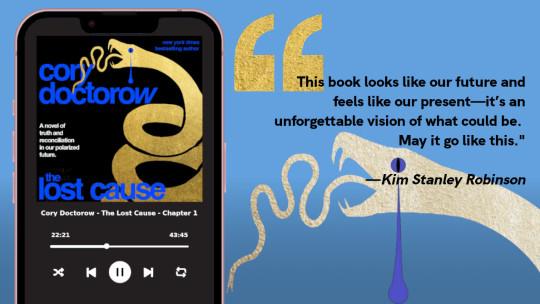
My books are sold without DRM, so you can play them in any app and do anything copyright permits, and that means Amazon won't carry them, and that means my publishers don't want to pay to produce them, and that means I produce them myself, and then I make the (significant) costs back by selling them on Kickstarter.
And you know what? It works. Readers don't want DRM. I mean, duh. No one woke up this morning and said, "Dammit, why won't someone sell me a product that lets me do less with my books?" I sell boatloads" of books through these crowdfunding campaigns. I sold so many copies of my last book, *The Internet Con, that they sold out the initial print run in two weeks (don't worry, they held back stock for my upcoming events).
But beyond that, I think there's another reason my readers keep coming back, even though I wrote a genuinely stupid number of books while working through lockdown anxiety while the wildfires raged and ashes sifted down out of the sky and settled on my laptop as I lay in my backyard hammock, pounding my keyboard.
(I went through two keyboards during lockdown. Thankfully, I bought a user-serviceable laptop from Framework and fixed it myself both times, in a matter of minutes. No, no one pays me to mention this, but hot damn is it cool.)
https://pluralistic.net/2022/11/13/graceful-failure/#frame
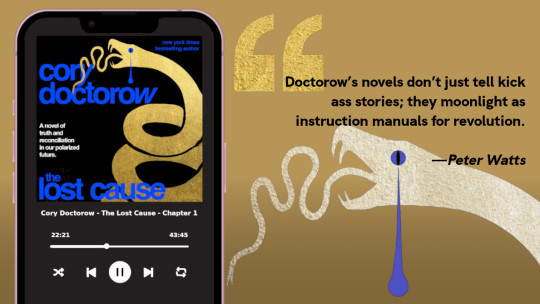
The reason readers come back to my books is that they're full of hope. In the same way that writing lets me feel like I'm not a passenger in life, but rather, someone with a say in my destination, the books that I write are full of practical ways and dramatic scenes in which other people seize the means of computation, the reins of power or their own destinies.
The protagonist of The Lost Cause is Brooks Palazzo, a high-school senior in Burbank whose parents were part of the original cohort of volunteers who kicked off the global transformation, and left him an orphan when they succumbed to one of the zoonotic plagues that arise every time another habitat is destroyed.
Brooks grew up knowing what his life would be: the work of repair and care, which millions of young people are doing. Relocating entire cities off endangered coastlines and floodplains, or out of fire-zones. Fighting floods and fires. Caring for tens of millions of refugees for whom the change came too late.
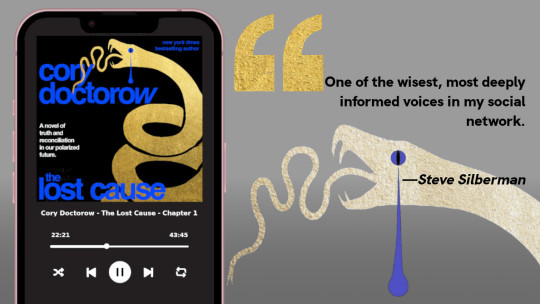
But with every revolution comes a counter-revolution. The losers of a just war don't dig holes, climb inside and pull the dirt down on top of themselves. Two groups of reactionaries – seagoing anarcho-capitalist billionaire wreckers and seething white nationalist militias – have formed an alliance.
They've already gotten their champion into the White House. Next up: dismantling every cause for hope Brooks and his friends have, and bringing back the fear.
That's the setup for a novel about solidarity, care, library socialism, and snatching victory from defeat's jaws. Writing it help keep me sane during the lockdown, and when it came time to record the audiobook, I spent a lot of time thinking about who could read it. I've had some great narrators: Wil Wheaton, @neil-gaiman, Amber Benson, Bronson Pinchot, and more.

I record my audiobooks with Skyboat Media, a brilliant studio near my place in LA. Back in August, I spent a week in their recording booth – "The Tardis" – doing something I'd never tried before: I recorded a whole audiobook, with directorial supervision: The Internet Con:
https://transactions.sendowl.com/products/78992826/DEA0CE12/purchase
When it was done, the director – audiobook legend Gabrielle de Cuir – sat me down and said, "Look, I've never said this to an author before, but I think you should read The Lost Cause. I don't direct anyone anymore except for Wil Wheaton and LeVar Burton, but I would direct you on this one."
I was immensely flattered – and very nervous. Reading The Internet Con was one thing – the book is built around the speeches I've been giving for 20 years and I knew I could sell those lines – but The Lost Cause is a novel, with a whole cast of characters. Could I do it?
Reader, I did it. I just listened to the proofs last week and:
It.
Came.
Out.
Great.
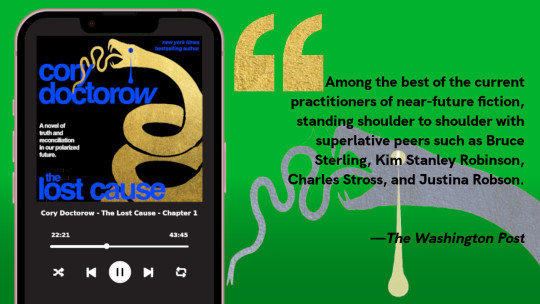
The Lost Cause goes on sale on November 14th, and I'll be selling this audiobook I made everywhere audiobooks are sold – except for the stores that require DRM, nonconsensually shackling readers and writers to their platforms. So you'll be able to get it on Libro.fm, downpour.com, even Google Play – but not Audible, Apple Books, or Audiobooks.com.
But in addition to those worthy retailers, I will be sending out thousands – and thousands! – of audiobook to my Kickstarter backers on the on-sale date, either as a folder of DRM-free MP3s, or as a download code for Libro.fm, to make things easy for people who don't want to have to figure out how to sideload an audiobook into a standalone app.
And, of course, the mobile duopoly have made this kind of sideloading exponentially harder over the past decade, though far be it from me to connect this with their policy of charging 30% commissions on everything sold through an app, a commission they don't receive if you get your files on the web and load 'em yourself:
https://www.kickstarter.com/projects/doctorow/red-team-blues-another-audiobook-that-amazon-wont-sell/posts/3788112
As with my previous Kickstarters, I'm also selling ebooks and hardcovers – signed or unsigned, and this time I've found a great partner to fulfill EU orders from within the EU, so backers won't have to pay VAT and customs charges. The wonderful Otherland – who have hosted me on my last two trips to Berlin – are going to manage that shipping for me:
https://www.otherland-berlin.de/en/home.html
Kim Stanley Robinson read the book and said, "Along with the rush of adrenaline I felt a solid surge of hope. May it go like this." That's just about the perfect quote, because the book is a ride. It's not just a kumbaya tale of a better world that is possible: it's a post-cyberpunk novel of high-tech guerrilla and meme warfare, climate tech and bad climate tech, wildcat prefab urban infill, and far-right militamen who adapt to a ban on assault-rifles by switching to super-soakers full of hydrochloric acid.
It's a book about struggle, hope in the darkness, and a way through this rotten moment. It's a book that dares to imagine that things might get worse but also better. This is a curious emotional melange, but it's one that I'm increasingly feeling these days.
Like, Amazon, that giant bully, whose blockade on DRM-free audiobooks cost me enough money to pay off my mortgage and put my kid through university (according to my agent)? The incredible Lina Khan brought a long-overdue antitrust case against Amazon while her rockstar DoJ counterpart, Jonathan Kanter, is dragging Google through the courts.
The EU is taking on Apple, and French cops are kicking down Nvidia's doors and grabbing their files, looking to build another antitrust case for monopolizing GPUs. The writers won their strike and Joe Biden walked the picket-line with the UAW, the first president in history to join striking workers:
https://doctorow.medium.com/joe-biden-is-headed-to-a-uaw-picket-line-in-detroit-f80bd0b372ab?sk=f3abdfd3f26d2f615ad9d2f1839bcc07

Solar is now our cheapest energy source, which is wild, because if we could only capture 0.4% of the solar energy that makes it through the atmosphere, we could give everyone alive the same energy budget as Canadians (who have American lifestyles but higher heating bills). As Deb Chachra writes in her forthcoming How Infrastructure Works (my review pending): we get a fresh supply of energy every time the sun rises and we only get new materials when a comet survives atmospheric entry, but we treat energy as scarce and throw away our materials after a single use:
https://www.penguinrandomhouse.com/books/612711/how-infrastructure-works-by-deb-chachra/
Anything that can't go on forever will eventually stop. We have shot past many of our planetary boundaries and there are waves of climate crises in our future, but they don't have to be climate disasters. That's up to us – it'll depend on whether we come together to save ourselves and each other, or tear ourselves apart.
The Lost Cause dares to imagine what it might be like if we do the former. We don't live in a post-enshittification world yet, but we could. With these indie audiobooks, I've found a way to treat the terminal enshittification of the Amazon monopoly as damage and route around it. I hope you'll back the Kickstarter, fight enshittification, inject some hope into your reading, and enjoy a kickass adventure novel in the process:
https://www.kickstarter.com/projects/doctorow/the-lost-cause-a-novel-of-climate-and-hope

If you'd like an essay-formatted version of this post to read or share, here's a link to it on pluralistic.net, my surveillance-free, ad-free, tracker-free blog:
https://pluralistic.net/2023/10/02/the-lost-cause/#the-first-generation-that-doesnt-fear-the-future
#pluralistic#audiobooks#the lost cause#crowdfunding#kickstarter#spoken word#climate#climate emergency#monopoly#drm#amazon#audible#skyboat#science fiction#hope not optimism
2K notes
·
View notes
Text
important life tip regarding the current political climate:
optimism is important.
gratitude is important.
if you are happy, that is wonderful.
but don't let that become ignorance. don't let that blind you from the current events happening around you.
DO NOT allow yourself to be brainwashed into thinking everything is fine when there are people whose rights are being taken away and whose families are being separated from them.
love and light is nice, but you need balance. it's okay to be angry, it's okay to be upset, rightfully so!
and before i get any notes saying "this is a witchcraft blog, stick to that", witchcraft is inherently political. it is what gave the oppressed a sense of power and control over their oppressors.
i will never prioritize a theme or aesthetic over speaking out.
#democracy not oligarchy#witchblr#witchcraft#divination#tarot reading#tarot#tarot cards#witch#eclectic witch#pagan#pagan witch#solitary witch#hedge witch#green witch#kitchen witch#sea witch#baby witch#spells#spellwork#potions#charm bag#hexes#curses#baneful magic#baneful witch#fuck trump#fuck elon musk#fuck mark zuckerberg
107 notes
·
View notes
Text
How to Use Regular Inspections to Identify Air Duct Replacement Needs
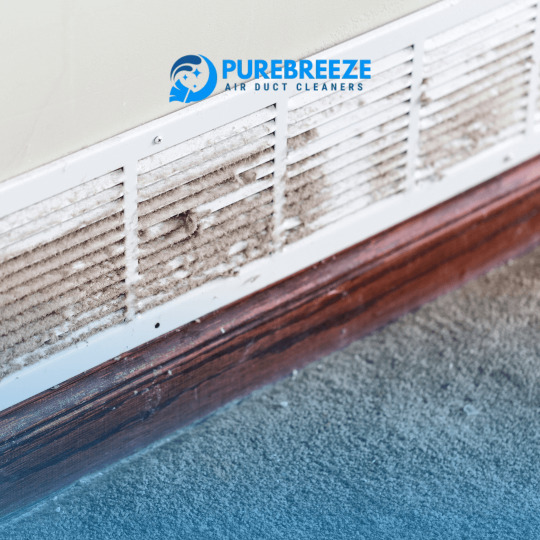
Air ducts play a vital role in maintaining your home’s comfort by circulating air efficiently throughout your space. Over time, air ducts can become damaged, leaky, or clogged with debris, which impacts their performance. Regular inspections are essential to catch these issues early and prevent costly repairs. In some cases, these inspections may reveal the need for air duct replacement to ensure optimal HVAC performance and air quality.
The Importance of Regular Air Duct Inspections
Regular inspections of your air ducts are crucial for identifying potential problems before they escalate. Over time, ducts can develop cracks, loose connections, or even suffer from blockages due to accumulated debris. These issues can lead to inefficient airflow, uneven room temperatures, and increased energy consumption. Early detection through routine inspections helps address these problems, preventing more significant damage that might require an urgent air duct replacement.
Signs Your Air Ducts May Need Replacement
There are several signs that your air ducts may require attention. If you notice uneven heating or cooling, higher-than-usual energy bills, or excessive dust buildup in your home, these could be red flags. Other indicators include strange noises coming from your HVAC system or visible damage to ductwork during an inspection. When these signs appear, a professional assessment can determine whether air duct replacement is necessary.
Extending the Life of Your HVAC System Through Inspections
Regular air duct inspections not only identify when replacement is needed but also help extend the lifespan of your HVAC system. Addressing minor issues early prevents them from escalating into major problems that can overwork your system. This proactive approach can save you money on energy costs and avoid the need for premature HVAC replacements. Routine maintenance, paired with timely air duct replacement, ensures your system operates efficiently for years.
Benefits of Air Duct Replacement
When inspections reveal significant duct damage, replacing the ducts can bring several benefits. A new duct system eliminates leaks, improving airflow and ensuring consistent temperatures throughout your home. This also enhances your HVAC system’s energy efficiency, helping to reduce utility bills. Moreover, air duct replacement improves indoor air quality by preventing contaminants like dust, mold, and allergens from circulating, making your home a healthier place.
How Often Should You Schedule Inspections?
To maintain a well-functioning HVAC system, it’s recommended to schedule air duct inspections every three to five years. However, homes with older systems, frequent HVAC usage, or noticeable performance issues may require more frequent inspections. By identifying problems early, you can plan for necessary maintenance or air duct replacement, avoiding unexpected disruptions and ensuring consistent home comfort.
Stay Ahead with Proactive Air Duct Care
Don’t let hidden air duct issues compromise your home’s comfort and efficiency. Regular inspections are the key to maintaining a healthy HVAC system. If your ducts show signs of wear or damage, consider scheduling a professional evaluation. When replacement is necessary, air duct replacement ensures your system runs smoothly, providing a more comfortable and energy-efficient home environment.
#Air Duct Replacement#Professional Air Duct Replacement#Residential Air Duct Replacement#Commercial Air Duct Replacement#HVAC Duct Replacement#Ductwork Replacement#Energy Efficient Ducts#Airflow Improvement#Damaged Duct Replacement#Leaky Duct Repair#Indoor Air Quality#HVAC Efficiency#Duct Sealing#New Air Duct Installation#HVAC System Maintenance#Air Duct Inspection#Old Duct Removal#Climate Control Optimization#Enhanced Home Comfort#Ventilation System Upgrade#Duct Replacement Services#Air Duct System Repair#HVAC Airflow#Cost-Effective Duct Replacement#Home Energy Savings#Clean Air Circulation.
0 notes
Text
SURROGATE PROCESSING WORKFLOW
DRC, Facility Operations Command, Compound Oversight Unit
Date: [REDACTED]
Subject: Surrogate Management Protocols
Location: Paternity Compound 131, [REDACTED], Oregon
Objective
This document provides a detailed overview of the surrogate processing workflow employed at Paternity Compound 131. It highlights the efficiency-focused methodologies implemented throughout the process, from intake to post-delivery. Personal letters from Surrogate ID S131-279-P are included, documenting his journey from arrival to delivery to help illustrate the overall operations.
I. Arrival & Intake
Transport
"Dear Dad,
I’m not sure where to start. They brought me here in this big, quiet van, and as soon as we got off, they started running all these tests. They gave me a number and tattooed it on my stomach like livestock. They keep saying I’m doing something important for the greater good, but I'm just confused." - S131-279
Candidates are transported to the facility in climate-controlled vehicles, ensuring they arrive in stable physical condition. They are processed in batches of [REDACTED] at a time for efficiency.
Initial Assessment
Upon arrival, surrogates undergo physical and psychological evaluations to assess readiness for the program. This includes fertility screening and compatibility testing for high-multiparity potential.
Registration
Each surrogate is tattooed with a unique ID number for tracking and monitoring throughout their conscription period, imprinted just above their navel.
Compound ID: The facility they will be housed in for gestation.
Arrival ID: The order number in which they arrived at the facility.
Fetal Count: A letter to indicate the number of viable fetuses they carry:
A (1) - B (2) - C (3) - D (4) - E (5) - F (6) - G (7) - H (8) - I (9) - J (10) - K (11) - L (12) - M (13) - N (14) - O (15) - P (16) - Q (17) - R (18) - S (19) - T (20) - U (21) - V (22) - W (23) - X (24) - Y (25) - Z (26) Example: Paternity Compound 127 + 437th Surrogate to Arrive + Carrying Quattuordecuplets (14) = S127-437-N
II. Rest & Preparation
Induction & Crowd Control
"Hey Dad,
Things are getting weirder by the day. Yesterday, they gave me a shot that burned like hell and made me feel woozy. It must have knocked me out cause I woke up, and it was tomorrow morning. I don’t know what happened, but I was so sore. I just want to go home." - S131-279, Arrival Weight 170 lbs
Entry areas are designed to funnel a group of surrogates into a single file line. Short but sweeping corridors are employed so that each candidate is prevented from seeing what lies ahead and concentrates on the individual in front of it.
Hygiene Protocols
Surrogates are directed to communal hygiene zones where they undergo full-body cleansing, enemas, and sterilization procedures.
Hormonal Optimization
Subjects are administered hormonal injections and supplements to ensure optimal uterine receptivity and increase the likelihood of successful embryo implantation.
Tranquilization (Optional)
Depending on the subject’s stress levels, mild to full sedation may be administered to maintain compliance and calm.
Note: [REDACTED]% of surrogates require some form of sedative before insemination.
III. Insemination Process
Surrogates can be assigned one of three insemination methods, depending on operational efficiency, donor availability, and strategic objectives:
"Dad,
I don’t even know who I am anymore. My body feels like it’s not mine. It’s only been a week since I arrived, and my stomach is growing so fast it scares me. I can’t stop eating, and it’s like my hunger gets worse the more I eat, but I can't stop. They keep telling me this is normal, that 16 is a "good number"?! They said it was a badge of honor. Sixteen! I feel like I’m being turned into something I don’t understand, and I can’t stop it." - S131-279-P, Day 6, Weight 192 lbs (+22 lbs)
In Vitro Fertilization (IVF):
Procedure: Embryos fertilized in a laboratory are implanted directly into the surrogate's uterus.
Benefits: High precision, maximum control over embryo count, and genetic compatibility.
Usage: Preferred for surrogates assigned to carry high-volume fetuses or when multiple donors are involved.
Traditional Method (Sexual Intercourse):
Procedure: Selected donors engage in physical intercourse with surrogates under closely monitored conditions.
Benefits: Natural conception methods reduce laboratory overhead and offer efficient insemination for surrogates with high natural fertility markers.
Usage: Typically used donor compatibility is exceptionally high.
Fluids Infusion (Turkey Baster Method):
Procedure: Donor samples are introduced directly into the surrogate's reproductive tract using a sterile infusion device.
Benefits: Combines simplicity with minimal intervention—a cost and time-effective alternative to IVF and traditional methods.
Usage: Often employed in high-volume batches where rapid insemination is required or transportation to the nearest compound is infeasible.
Post-Procedure Monitoring: Surrogates remain in observation units for [REDACTED] hours to confirm successful implantation and address any immediate complications.
IV. Monitoring & Maintenance
Ward Assignment
"Dad,
I don’t think I can do this anymore. My belly is enormous—I can barely move, and I’m out of breath all the time. They keep saying I’m ‘thriving,’ but how can they call this thriving? I heard one of the staff joking about how I’m ‘one of the biggest ones yet.’ They think it’s funny. I don’t. I can feel them—16 of them—moving inside me, taking over everything I used to be. I’m not me anymore." - S131-279-P, Day 13, Weight 254 lbs (+84 lbs)
Surrogates are transferred to gestational wards, where they will reside for their pregnancies. These wards have medical monitoring stations, communal feeding areas, and resting zones.
Nutrition Protocols
Diets are adjusted to high-calorie "one-size-fits-all" solutions, such as nutrient-dense puddings designed to promote fetal growth while maintaining surrogate docility. Hormonal treatments are incorporated into meals to reduce the need for frequent medical interventions.
Weekly Checkups
Surrogates undergo routine ultrasound exams, weight measurements, and health assessments to ensure all embryos develop within target parameters.
Behavioral Observations
Any signs of distress or resistance are addressed promptly through psychological support or, if necessary, isolation protocols.
V. Delivery Process
"This will probably be my last letter. I don’t think I’ll make it much longer. My body’s breaking under the weight—literally. I'm too big, no one was ever meant to be this big. They’re moving me to the birthing wing tomorrow, and I know what that means. I’m terrified, but I don’t have a choice. I just want you to know I didn’t have a choice." - S131-279-P, Day 28, Weight 490 lbs (+320 lbs)
Pre-Labor Preparation
As surrogates approach full term (29-35 days), they are moved to birthing wings equipped with specialized delivery equipment and staff trained for high-multiparity births. Diets are radically adjusted to promote greater weight gain.
Labor Management & Delivery
Surrogates are monitored continuously, and medical staff is on hand to manage complications. Multiple babies are delivered in succession. This process may last several hours or more, depending on the number of fetuses.
Post-Delivery Processing:
Fetuses are immediately evaluated for health and viability.
Surrogates are provided palliative care as necessary.
VI. Post-Delivery Workflow
"Surrogate S131-279-P demonstrated remarkable endurance and successfully delivered 16 fetuses, average weight 14 lbs, in 30-45 minute intervals, after a 34-hour labor. The surrogate's abdomen showed extreme distension, with clear evidence of significant internal [REDACTED]. Full natural delivery was achieved, but the surrogate succumbed to irreversible [REDACTED] failure minutes after the final baby was delivered." - Dr. [REDACTED], Chief OBGYN, Paternity Compound 131
Vital Cessation Verification
Medical staff confirm the cessation of all vital signs immediately following delivery to ensure compliance with humane protocols. Time and cause of expiration are noted for record-keeping and research purposes.
Surrogate Decommissioning & Disposal
[REDACTED]
Note: As standard protocol, all personal items of Surrogate S131-279-P were recycled following his decommissioning, including the destruction of [REDACTED] paper letters addressed to a Mr. [REDACTED] Collazo.
Surrogate Output Metrics
Each surrogate’s performance is evaluated against pre-delivery projections. The Prenatal Division records key performance indicators for review, including total fetal weight, fetal viability, and gestational efficiency. Personal details related to the surrogate are then purged to save computer storage space and maintain confidentiality.
Key Metrics and Efficiency Goals
Average Per Surrogate: 8–14 Embryos
Delivery Survival Rate (Fetuses): [REDACTED]%
Surrogate Survival Rate: 0%
Cost per Surrogate: $[REDACTED]
This structured process ensures that surrogate output meets national population growth goals while maintaining operational efficiency and cost-effectiveness.
----------------
Click Here to return to DRC Report Archives

57 notes
·
View notes
Text



A new sci-fi drama titled The Assessment is reportedly in the works, and it's set to star Elizabeth Olsen (Doctor Strange in the Multiverse of Madness) and Alicia Vikander (Tomb Raider) as a couple living in a world destroyed by climate change. The story takes place in a timeline where "part of society has created a parallel world. Life is controlled and optimized, and the desire to have children is not left to chance." Olsen and Vikander will play a successful young power couple who want to start a family, but must allow an "Assessor" into their lives for seven days to see if they qualify. Anna Kendrick is also said to be circling a role (possibly that of the Assessor). -CBM
#screaming crying throwing up#alicia vikander#elizabeth olsen#the assessment#movie news#lgbtq+ films#wlw#directed by women
600 notes
·
View notes
Text
The Right Team Can Do Anything: Neoliberal Optimism in Veilguard
In an era where crisis feels constant—climate collapse, inequality, war—it’s no surprise that games offer worlds we can fix. But how we fix them, and who gets to do the fixing, reveals a lot about what we believe change actually looks like.
Some games, like Dragon Age: Veilguard, present crisis as a backdrop for elite competence: the world saved by clever, compassionate insiders. The message is soothing—if the right people are in the room, the system will gently reform itself. Veilguard consistently frames these “enlightened elites” as the drivers of change. The common people of Thedas remain background texture or quest objectives, not active agents of history.
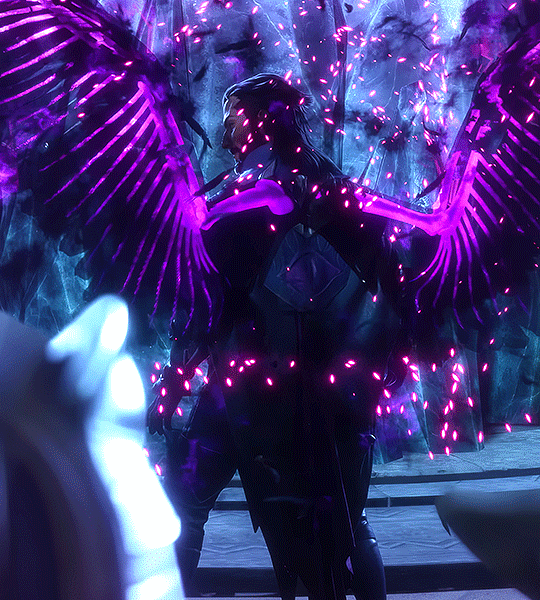
Veilguard’s political “solutions” mostly boil down to elite reformers fixing elite systems. Characters like Dorian, Maevaris, and Lucanis are all upper-class insiders—Magisters or heirs to mafia dynasties—who work to reform their societies from within. The game frames them as the “good nobles” who can course-correct a corrupt empire, reinforcing the idea that change comes from the top, not the people.

And then there’s Neve: the lone exception of a Tevinter mage and a detective returning to protect Docktown’s poverty-stricken residents. It's a rare moment of (likely accidental) realism—she’s kept outside the structures of elite power that claim to be dismantling slavery yet still happily ignore the corruption and suffering happening right on their doorstep; the ending slides show Neve going right back where she started.
Even Neve’s “outsider” status is limited: she’s a protector, not a peer, to Docktown’s residents. She may lack political influence, but she still occupies a familiar power fantasy: vigilante caretaker over a powerless collective. The class gap remains intact.

Bellara, the field academic? She “helps” the Dalish put the evils of their past behind them, as if centuries of persecution, loss, and spiritual identity can be healed through a single, clean emotional arc. There’s no visible inter-clan disagreement, no community grief, no diaspora realism, just one elf and a narrative button labeled resolve. It’s neat, it’s tidy, and it reinforces Veilguard’s favorite message: individuals solve everything.
Other companions follow a similar pattern. Emmrich is a professor who potentially gains eternal tenure among Nevarran top elite, Davrin is a senior Grey Warden, and Taash is a special Qunari born with special powers. Each of these companions has real-life social cachet as a result of their birth or rank. If you translated them to real-life figures, you'd get people solidly middle class and higher.

The lone exception to the Special Team is Harding, a former Inquisition scout, who gains special powers during the story but doesn't exactly have an elite status in the world; the Inquisition has been disbanded, so she and Varric are the remaining remnants of the Inquisition, but Harding can't really use her status within her faction as a leverage for power or influence, and it doesn't grant her real-life white-collar connotations either.
Thus, Harding is the closest we get to a true working class representative in Veilguard, and against that backdrop I find her arc of gaining Stone Magic that she struggles to control, well, not the worst but totally on brand for Veilguard's fuzzy political thinking. I'm sure it's a coincidence the most ordinary working class-coded individual is the one with arc where she suddenly gains a new status and skills she doesn't know how to deal with, instead of having an arc centered around her already being an expert like the others ostensibly are.
The others are framed as experts in control of their identities and social standing; Harding, in contrast, becomes special by accident. Her story is about managing a gift she didn’t ask for. It’s a classic underdog narrative, but framed within Veilguard’s habitual lens: the individual rises, and once they do, they must learn to control themselves, not the system. We really don't see what happens with Dwarven culture if Harding survives the story.

The combined effect is that Veilguard defaults to a kind of neoliberal optimism: the idea that with the right diverse team of heroic individuals at the helm, even entrenched systems of oppression will gently reform themselves, and those parts that don’t will still have exceptional vigilantes to look after them. Actual, systemic change is nearly absent. Okay, the Grey Wardens get a brief shoutout in the epilogue for turning their swords toward rebuilding after the Blights—a quiet but satisfying “swords to ploughshares” moment. But one epilogue slide against all the rest of it isn’t enough, in my opinion.
It's not enough to shine a light and cast away the shadow.

(Yes, I know invoking Ayn Rand has become a running gag on this blog. And no, she’s not the definition of neoliberalism.
But let’s be honest: when I bring her up, you all know exactly what kind of rugged, bootstrap-flavored individualism we’re talking about. So she stays.)
#veilguard critical#bioware critical#da:tv critical#dragon age critical#veilguard spoilers#a lot of thoughts on veilguard#materialist analysis of video games#social class#dragon age the veilguard is neoliberalist schlock#companions analysis
21 notes
·
View notes
Text

Part 6: Warning Labels For The End Of The World
a story by @rox-and-prose and @cipheramnesia
Parts 1 to 5 are available to read on Ao3!
Deep under miles of blistered, freezing atmosphere strewn with purple gray slurry, the most illegal werewolf in the entire earth civilation rested her muzzle in the crook of her elbow, relaxing in the controled climate of the second most illegal space system ship in most of earth civilization. The uneven floor switches, pyramidal dials, and assorted sensors jabbed Laika through her fur and she mostly ignored them.
She sighed, blowing her fur across her arm. Sy was out in the bay, helping Peng and his extensions run fiberoptics and ductile metals throughout the major damage Genghis Khan had sustained. The major injuries it had sustained, she reminded herself. Damage was something that happened to objects, shells as GK called them. Injuries happened to the living.
"Hey GK," she said, muffled by speaking into her elbow.
"Hello Laika. Would you like me to list productive activities which you could undertake in lieu of your present occupation?"
"Uh. Nah. Just, how are you?"
"My condition has largely remained unchanged since you initially stumbled your way into my airlock. I continue to find the activities of Peng uncomfortable, but not so much that I am unavle to tolerate them. My assessment is that he is performing adequately. I am what you so often would call 'fine.'"
"But does it still, y'know, hurt?"
"There is no impediment caused by the injury, and I am presently fully capable of optimal performance, or as much of it as is feasible with the lackluster availability of fuel."
She looked generally up, because she always imagined GK as 'up' when she was on the bridge. "That sounds like it still hurts."
"In a sense, that may be correct. However, it is negligible to support of Pilot functions."
"So like, what can Pilot do to support your function?"
"Laika, you understand my function, and we have discussed in some great detail that implementation will not be undertaken within earth civilization."
"I meant, how can I help you get better. To heal."
"The present level of assistance is likely the maximum amount which may be accomplished within your civilization. You can, as you say, 'help me get better' most expediently by understanding that I cannot get better. The work of Peng and Sy may help with more efficient utilization of my capabilities. My injuries, however, cannot be corrected. In my creation, such trivialities were and remain unimportant. The injuries will not reduce my capabilities, but they will never heal, as you imagine the concept."
Laika rubbed a hand over the scar on her thigh. "That sounds awful GK."
"It is no worse than the way your flesh grows back together imperfectly, a parody of your true form. I will never seek to recreate what the Pilot created. It is folly and pride to try."
"Hmm," she muttered. "I was thinking about that implementation stuff. Like, I should learn more, more about what you do."
"It will bring me great satisfaction to educate you further on this aspect of my function, and to help you better understand the function of Pilot. However, the presence of the human doctor is needed. I have gained contact with the fae court of the electromagnetic spectrum, and we will require a translator."
"Do you think they'll take Yelena? Can they?"
"If the electromagnetic fae cannot take her, her body will cease its ability to function within approximately three weeks. There is no cause for alarm."
"Huh," she got to her feet and pulled on her envirosuit. "You're sure they'll have her?"
"I am unsure of this, but I am certain that her current condition will come to a swift end regardless."
"I'll go get Sloane then."
62 notes
·
View notes
Text

PEDRI in Collaboration with AUDEMARS PIGUET - BARCELONAS GOLDEN BOY
Similarly, Pedri grew up in the mountainous municipality of Tegueste in the Canary Islands, surrounded by natural beauty. Spending hours near the sea playing football with his brother and friends, he has experienced the joys of the planet and its beauty before entering a life of football, fashion and bright lights. But a profound sense of where he has come from remains, and humility and humbleness continue to lead the 21-year-old’s choices.
His recent collaboration with Platano De Canarias, an institutional brand fighting malnutrition through the promotion of bananas, is a testament to that. The banana is the most important crop in the Canary Islands and for decades, the industry has been the protagonist of the economic growth of the archipelago – accounting for 60% of Europe’s banana production. He is also an ambassador for Kick Out Plastic, a non-profit international campaign fighting for a world free of plastic pollution and climate change.
“Climate change is something that affects us all and should concern us all, especially young people,” Pedri explains. “Sustainability and recycling are part of my daily life because my parents instilled it in me since I was a child. Being from a natural paradise like the Canary Islands, which also lives mainly from tourism, I am very aware of the importance of taking care of nature for all of us.”
As a 21-year-old with over 13 million followers on Instagram, you might not expect such issues to be on Pedri’s radar. Yet he is acutely aware that he not only has the world at his feet but in his hands — a gift he has no intention of wasting.
Intelligent, humble, and grounded, Pedri represents the younger generation with flying colours. He is a role model to all those who find themselves lucky enough to share his position and an indication that the high-profile figures at the forefront of modern football might just have deeper purposes.
On the pitch, Pedri has been hailed like no other — ‘One of the world’s best’ in the opinion of Barcelona’s manager Xavi Hernández, and ‘The signing of the decade’ according to Marca, Spain’s leading sports news outlet.
Lionel Messi’s final campaign in the famous red and blue hoops of Barça didn’t quite live up to expectations but offered an exciting window into what could be. Pedri was fresh on the scene; quiet, innocent, slight in figure and polite in persona; terrorising defences with a low centre of gravity, immense skill, close control and vision. His personality and playing style drew obvious comparisons to the iconic Argentine with whom he had struck up quite the partnership on the field. By all accounts, Barça’s next messiah was born.
But the story of a wunderkind is rarely so simple. Following his move to Barcelona and The Kopa Trophy win, he played a staggering 73 games and over 4,000 minutes in less than a year and subsequently suffered a string of injuries that would leave him out of the side for months at a time. While he has since returned to the team and reasserted his peerless playmaking form, the issue of over-played, over-pressured, fatigued young players falling victim to a demanding fixture schedule remains a pressing problem with the modern game.
“Professional football is very, very demanding, not only physically but mentally too,” Pedri admits. “I try to face things professionally and prepare myself to always be in optimal condition. That’s why it’s even more annoying when an injury forces you to stop and start all over again.
“In difficult moments, my brother Fer — the person I love the most in this life — is the one who protects me and is always by my side. I like to spend my days off at home with him and my family, watching TV series, playing board games and enjoying their company.
At first glance, Pedri appears to be an ordinary young man, but one who is poised on the brink of greatness. As the bricks for the new Camp Nou are laid one by one, Pedri is quietly constructing his own empire, drawing support from family, friends, and his sheer love for football.
“I am who I am because of my parents,” says Pedri. “They raised me with very clear values: you must be humble and respect everyone. I live my life by a quote from the legend Johan Cruyff, ‘Salid y disfrutad’ which means to ‘go out and enjoy’, and I think that sums up my approach to life.”

87 notes
·
View notes
Text
The World Food Summit of 1996 approached food security through the principles of ensuring there is enough safe and nutritious food that can be accessed daily to meet healthy dietary needs and food preferences. By definition, this is a desirable and worthy goal. However, in the years since, food security has developed into a paradigm which does not question the underlying power dynamics and the reproduction of material conditions that make food insecurity a permanent feature of the global order. At its core, the food security paradigm deals only with access to food, without challenging the political and economic structures that determine and control access, as well as distribution. By failing to address the root causes of hunger and famine, the food security paradigm makes it impossible to end hunger globally. Of course, many people worldwide possess food security, but this is restricted to increasingly limited geographic pockets. In terms of the people localised in one area, food vulnerability is influenced and determined by class, race, gender and, of course, citizenship status. Globally, “underdevelopment” and “de-development” lead to widespread food insecurity across areas. Another problem with the food security paradigm is that it is easily co-opted to generate partial answers that pose no threat to the corporate food system, or worse, that even open up new profit opportunities. Accelerated by other crises, the food security paradigm becomes ever more dependent on aid, be it through direct food delivery, cash transfers or small development projects that cannot compete with the food giants and their price-setting powers. In practice, a “science of food security” emerges, one which takes as its focus calories and the output that is compatible with precision agriculture having the aim to increase crop yields and to assist management decisions using high technology sensor and analysis tools. This model tends to be reliant on “Green Revolution” technologies that rely on chemical fertilisers and pesticides and that are tied to colonial projects and corporations, in order to optimise resources in aid response and/or development projects. In this rationale, food insecurity can be addressed by reaching optimum yields of certain crops that should meet the demand for fats, fibres and protein. All of this is carefully managed and data-driven. Precision farming is advocated by the Alliance for a Green Revolution in Africa (AGRA) with the objective of optimising, “agricultural value chains […] critical in advancing food and nutrition sufficiency without increasing the size of land under cultivation.” The framing of food that reduces it only to “optimal input” relegates vital elements of food production and the culture of eating, like territory ownership, taste, heritage, care, well-being and connection as secondary. This reductionist approach has, though, proved useful to corporate agriculture, since it reinforces the case for genetically modified crops (GMOs), more efficient fertilisers, and the standardisation of food production for market purposes. Advocates of plant breeding technologies (including GMOs and hybrid seeds) argue that government overregulation is an obstacle to achieving food security. Overregulation, as the argument goes, denies populations the opportunity to grow crops that have increased nutrient use efficiency and are more resilient to climate shocks.
[...]
The paradigm of food security is about optimising productivity. It’s true that productivity matters – after all, feeding the world requires enormous quantities of food. But if productivity is approached solely as a technological problem, it reinforces the tendency to fragment the quantitative and qualitative aspects of food production and consumption. On the quantitative side, production for food security is viewed as a challenge of multiplication. Whereas division, that is, distribution of food, is left to logistical planning. This ignores what Raj Patel identified in his influential 2007 book Stuffed and Starved, as the bottleneck of power that concentrates international food distribution among a small set of corporations. This bottleneck excludes the poor and small-scale food producers from decision-making. It also normalises worrying tendencies, such as an overreliance on industrial animal exploitation as a protein source, which has direct health implications, as well as longer term consequences like the proliferation of new viruses, greenhouse gas emissions and inefficient use of water and soil.
28 May 2024
59 notes
·
View notes